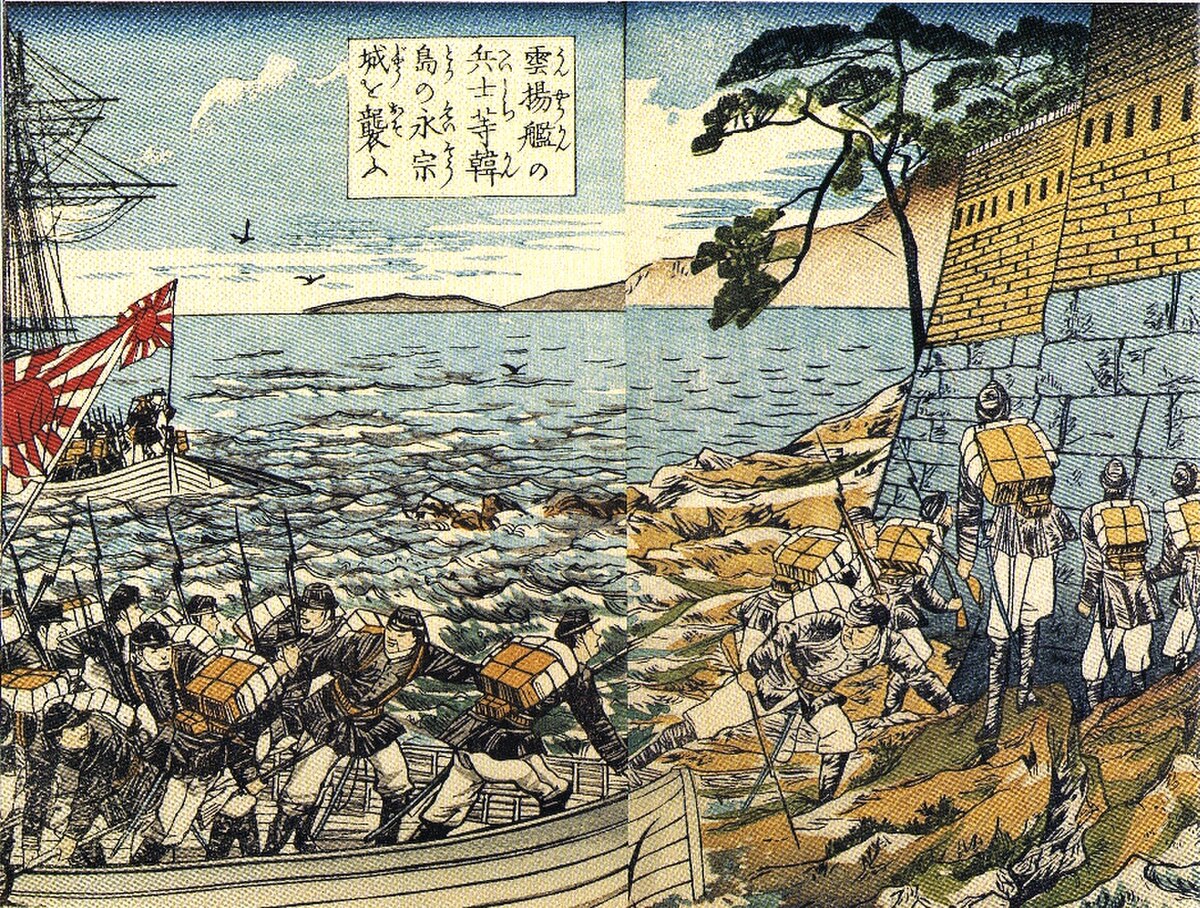
Korea under Japanese Rule
Korean PeninsulaDuring the period of Japanese rule in Korea, beginning with the Japan-Korea Annexation Treaty in 1910, the sovereignty of Korea was heavily contested. Japan claimed that the treaty was lawful, but Korea disputed its validity, asserting it was signed under duress and without the necessary consent of the Korean Emperor.[72] The Korean resistance to Japanese rule was embodied by the formation of the Righteous Army. Despite Japan's attempts to suppress Korean culture and benefit economically from the colony, much of the infrastructure they built was later destroyed in the Korean War.[73]
The death of Emperor Gojong in January 1919 sparked the March 1st Movement, a series of nationwide protests against Japanese rule. Spurred by Woodrow Wilson's principles of self-determination, an estimated 2 million Koreans participated, although Japanese records suggest fewer. The protests were met with brutal suppression by the Japanese, resulting in around 7,000 Korean deaths.[74] This uprising led to the formation of the Provisional Government of the Republic of Korea in Shanghai, which is recognized in the constitution of South Korea as its legitimate government from 1919 to 1948.[75]
Educational policies under Japanese rule were segregated by language, which affected both Japanese and Korean students. The curriculum in Korea underwent radical changes, with restrictions on the teaching of Korean language and history. By 1945, despite these challenges, the literacy rate in Korea had reached 22%.[76] Additionally, Japanese policies enforced cultural assimilation, such as mandatory Japanese names for Koreans and the prohibition of Korean-language newspapers. Cultural artifacts were also looted, with 75,311 items taken to Japan.[77]
The Korean Liberation Army (KLA) became a symbol of Korean resistance, consisting of exiled Koreans in China and other locations. They engaged in guerrilla warfare against Japanese forces along the Sino-Korean border and were part of allied operations in China and Southeast Asia. The KLA was supported by tens of thousands of Koreans who also joined other resistance armies like the People's Liberation Army and the National Revolutionary Army.
Upon Japan's surrender in 1945, Korea faced a significant vacuum in administrative and technical expertise. Japanese citizens, who had constituted a small percentage of the population but held significant power in urban centers and professional fields, were expelled. This left Korea's largely agrarian Korean population to rebuild and transition from decades of colonial occupation.[78]
